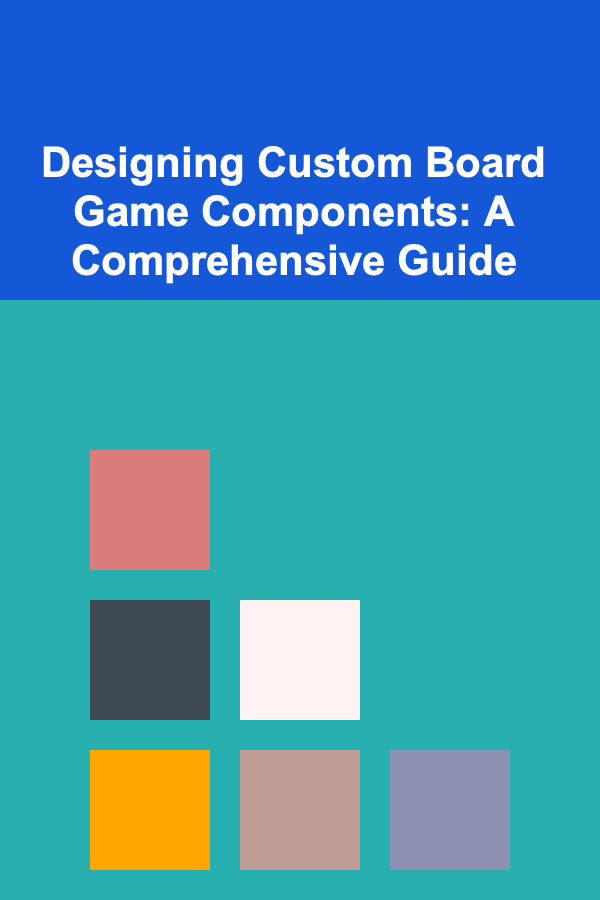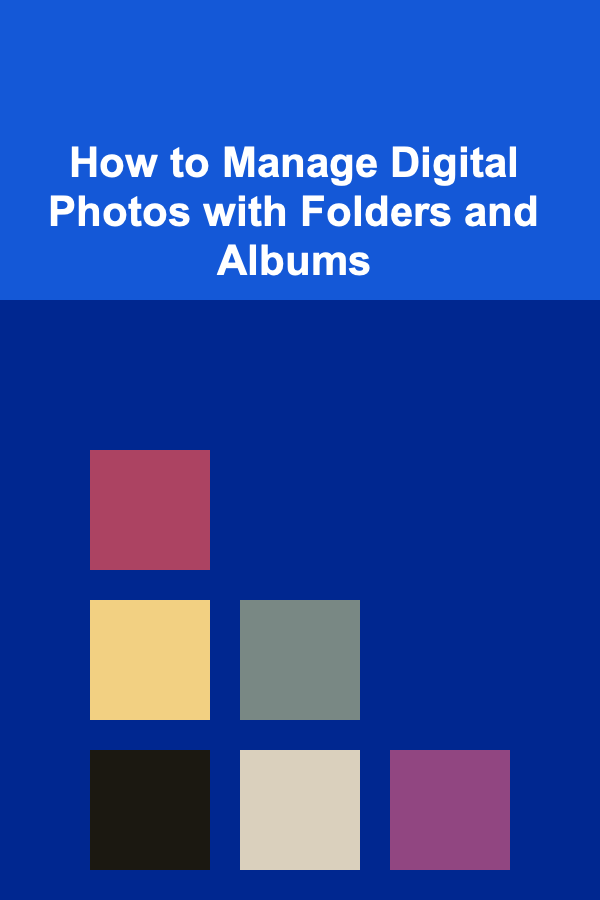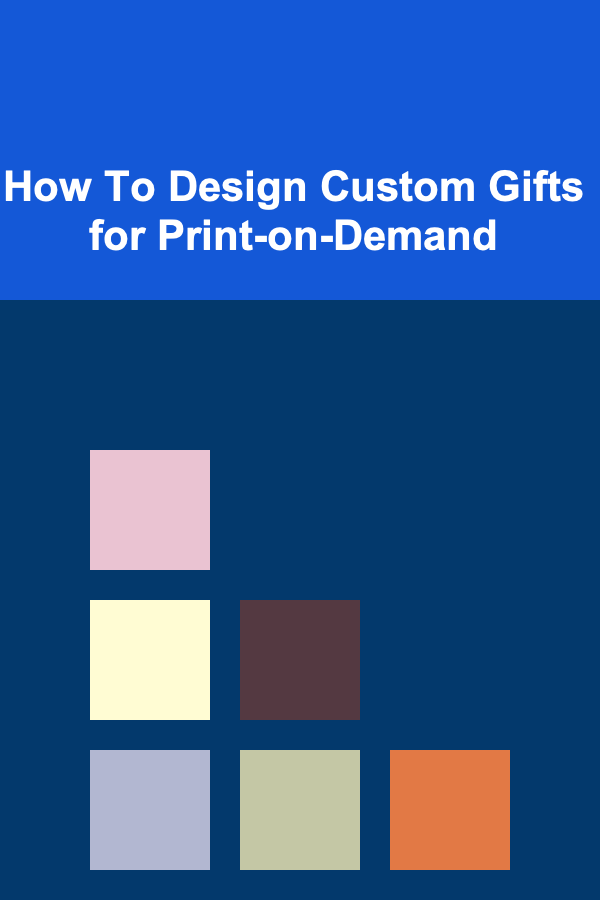
Designing Custom Board Game Components: A Comprehensive Guide
ebook include PDF & Audio bundle (Micro Guide)
$12.99$9.99
Limited Time Offer! Order within the next:

The heart of any captivating board game lies not just in its rules and strategy, but also in the tangible components that bring it to life. While generic meeples and dice have their place, designing custom board game components can elevate your game from merely playable to truly unforgettable. This guide provides a deep dive into the multifaceted process of creating components that are not only functional and durable, but also aesthetically pleasing and integral to the game's theme and mechanics.
I. Conceptualization: From Game Mechanics to Physical Representation
Before diving into the technical aspects of component design, a solid conceptual foundation is crucial. This involves understanding how your game mechanics translate into tangible objects. Consider these key questions:
A. Functionality and Purpose
What role does each component play in the game? Is it for tracking resources, representing characters, marking territory, or rolling for random events? The intended function will significantly influence the type of component you choose. For instance:
- Resource Tracking: Cubes, tokens, dials, or even custom-shaped pieces can be used to track various resources like money, wood, or influence.
- Character Representation: Meeples, miniatures, standees, or unique sculpted figures can represent players or non-player characters (NPCs).
- Territory Control: Discs, tiles, or miniature buildings can be used to claim and control territories on the game board.
- Random Number Generation: Dice, spinners, or card decks can introduce elements of chance into the game.
- Information Dissemination: Cards, tiles, or boards can convey information to players, such as event details, character abilities, or map layouts.
B. Thematic Integration
Components should seamlessly integrate with the game's theme and narrative. A well-chosen component can enhance immersion and create a stronger emotional connection with the game. Think about:
- Visual Style: The component's color, shape, and texture should reflect the game's overall aesthetic. A fantasy game might use wooden tokens shaped like runes, while a sci-fi game might use translucent plastic cubes.
- Material Choice: The material used should also align with the theme. A historical game might utilize wooden or metal components to evoke a sense of authenticity, while a modern game might use plastic or acrylic.
- Symbolism: Consider incorporating symbolic elements into the component's design. For example, a dragon-shaped meeple could represent a powerful faction in a fantasy game, or a cogwheel token could represent technological advancement in a steampunk game.
C. Player Experience
How will players interact with the components? Consider ergonomics, ease of use, and tactile feel. The components should be comfortable to handle and intuitive to use. Factors to consider include:
- Size and Weight: Components should be appropriately sized for easy manipulation. Too small, and they can be difficult to handle. Too large, and they can clutter the game board. Weight also plays a role in the tactile experience.
- Grip and Handling: Consider the shape and texture of the component to ensure it's easy to grip and move around the game board.
- Clarity and Visibility: Information displayed on the component, such as numbers or symbols, should be clear and easily visible.
II. Component Types and Design Considerations
Let's explore some common board game component types and the design considerations specific to each:
A. Dice
Dice are a fundamental component for introducing randomness. Beyond the standard six-sided die (d6), a multitude of options exist:
- Number of Sides: d4, d8, d10, d12, d20, and even custom dice with unique faces are available. The choice depends on the desired probability distribution.
- Custom Faces: Instead of numbers, dice can feature symbols, icons, or even miniature illustrations relevant to the game's theme. This allows for more nuanced and thematic outcomes.
- Material and Finish: Dice can be made from various materials, including plastic, wood, metal, and even gemstone. The finish can range from glossy to matte, influencing the tactile feel and aesthetics.
- Size and Weight: Larger dice are easier to handle but can take up more space. Heavier dice often feel more premium.
Design Tip: When designing custom dice faces, ensure the symbols are clear, easily distinguishable, and resistant to wear and tear. Consider using recessed engravings and durable paint.
B. Cards
Cards are versatile components used for a wide range of purposes, from drawing random events to representing character abilities:
- Card Size and Shape: Standard sizes include poker size (2.5 x 3.5 inches) and bridge size (2.25 x 3.5 inches). Consider the amount of information that needs to be displayed on each card. Custom shapes can also be used, but they may be more expensive to produce.
- Card Stock and Finish: Card stock refers to the thickness and weight of the card. A thicker card stock is more durable and feels more premium. The finish (e.g., linen, glossy, matte) affects the card's texture and resistance to wear and tear.
- Layout and Typography: The card layout should be clear and organized, with information presented in a logical hierarchy. Choose fonts that are easy to read and consistent with the game's theme.
- Artwork and Illustration: High-quality artwork can greatly enhance the visual appeal of the cards and contribute to the game's overall aesthetic.
Design Tip: Prioritize readability. Use clear, concise language and a well-organized layout to ensure players can quickly understand the information on each card. Consider using icons and keywords to further enhance clarity.
C. Meeples and Miniatures
Meeples and miniatures are used to represent players, characters, or units within the game:
- Meeples: Meeples are small, stylized wooden figures that come in various shapes and colors. They are a simple and cost-effective option for representing players or characters. Custom shapes can be designed to reflect the game's theme.
- Miniatures: Miniatures are more detailed, three-dimensional figures, often made from plastic or resin. They can be sculpted to represent specific characters or units with a high level of detail.
- Scale and Proportions: The scale of the miniatures should be consistent with the game board and other components. Ensure the proportions are realistic and aesthetically pleasing.
- Material and Finish: The material used for miniatures affects their durability and level of detail. Plastic is more affordable and durable, while resin allows for finer details but is more fragile. The finish (e.g., painted, unpainted) affects the miniature's visual appeal.
Design Tip: Consider the painting process if using miniatures. Design the miniatures with clear separation between details to make them easier to paint. Provide painting guides or tutorials for players who want to customize their miniatures.
D. Tokens and Tiles
Tokens and tiles are used for tracking resources, marking territory, or representing game elements:
- Shape and Size: Tokens can be circular, square, rectangular, or custom-shaped. Tiles are typically square or hexagonal. The size of the tokens and tiles should be appropriate for the game board and other components.
- Material and Thickness: Tokens and tiles can be made from cardboard, wood, plastic, or metal. The thickness affects their durability and tactile feel.
- Artwork and Graphics: The artwork and graphics on the tokens and tiles should be clear, concise, and visually appealing. Use colors and symbols that are easy to distinguish.
- Functionality: Consider adding features to the tokens and tiles to enhance their functionality. For example, tokens can have indentations for stacking, or tiles can have interlocking edges to prevent them from shifting.
Design Tip: Consider the stackability of tokens. Design them with a slightly recessed area on top to allow for stable stacking, which is especially important for resource management.
E. Boards
The game board is the central playing surface and a key element of the visual presentation:
- Size and Shape: The size and shape of the game board should be appropriate for the number of players and the complexity of the game.
- Material and Thickness: Game boards are typically made from cardboard or chipboard. A thicker board is more durable and less likely to warp.
- Layout and Design: The board layout should be clear and intuitive, with spaces or areas clearly defined. Use colors and graphics that are visually appealing and consistent with the game's theme.
- Functionality: Consider adding features to the game board to enhance its functionality. For example, recessed areas can be used to hold tokens or dice, and score tracks can be integrated into the board design.
Design Tip: Ensure the board is easy to read from all angles. Avoid using colors that clash or make it difficult to distinguish between different areas of the board. Consider adding a gloss finish to protect the board from wear and tear.
III. Material Selection: Balancing Aesthetics, Durability, and Cost
Choosing the right materials is crucial for creating high-quality board game components. Consider the following factors:
A. Durability
Components should be able to withstand repeated use and handling without showing signs of wear and tear. Durable materials are essential for ensuring the longevity of your game.
- Card Stock: Choose a card stock that is thick enough to resist bending and tearing. Consider a linen finish to add extra durability and a premium feel.
- Wood: Hardwoods like maple and birch are more durable than softwoods like pine. Consider using a sealant or varnish to protect the wood from moisture and scratches.
- Plastic: Choose a plastic that is resistant to cracking and breaking. ABS plastic is a good option for miniatures and other components that require high impact resistance.
- Metal: Metal components are very durable but can be more expensive to produce. Consider using a coating or plating to protect the metal from rust and corrosion.
B. Aesthetics
The materials used should contribute to the overall aesthetic appeal of the game. Consider the texture, color, and finish of the materials.
- Wood: Wood can add a natural and rustic feel to the game. Different types of wood have different colors and grains, so choose a wood that is consistent with the game's theme.
- Plastic: Plastic can be molded into a wide variety of shapes and colors. Translucent or opaque plastics can be used to create different visual effects.
- Metal: Metal can add a sense of luxury and sophistication to the game. Different finishes, such as polished, brushed, or matte, can be used to create different visual effects.
C. Cost
The cost of the materials will significantly impact the overall cost of producing your game. Consider balancing the desired aesthetics and durability with your budget. Consider ordering in bulk to reduce the per-unit cost.
- Cardboard and Chipboard: These are the most affordable options for game boards and tokens.
- Wood: Wood is generally more expensive than cardboard or plastic.
- Plastic: Plastic is a versatile and relatively affordable option for miniatures and other components.
- Metal: Metal is the most expensive option, but it can add a premium feel to your game.
D. Environmental Impact
Increasingly, consumers are aware of the environmental impact of their purchases. Consider using sustainable materials and manufacturing processes whenever possible.
- Recycled Materials: Using recycled cardboard, paper, or plastic can reduce the environmental impact of your game.
- Sustainable Wood: Choose wood from sustainably managed forests.
- Eco-Friendly Inks and Coatings: Use inks and coatings that are water-based and free of harmful chemicals.
IV. Prototyping and Iteration: Testing and Refining Your Designs
Prototyping is an essential step in the component design process. It allows you to test your designs, identify problems, and refine your ideas before committing to mass production.
A. Low-Fidelity Prototyping
Start with simple, low-cost prototypes using readily available materials like paper, cardboard, and markers. This allows you to quickly test the functionality and usability of your components.
- Paper Prototypes: Use paper to create temporary cards, tokens, and boards.
- Cardboard Prototypes: Use cardboard to create more durable versions of your components.
- Hand-Drawn Artwork: Use markers and colored pencils to create simple artwork and graphics.
B. High-Fidelity Prototyping
Once you are satisfied with the basic functionality of your components, create more refined prototypes using higher-quality materials and printing techniques. This allows you to evaluate the aesthetics and durability of your designs.
- Professionally Printed Cards: Order professionally printed cards from a printing company.
- 3D-Printed Miniatures: Use a 3D printer to create prototypes of your miniatures.
- Laser-Cut Tokens and Tiles: Use a laser cutter to create prototypes of your tokens and tiles.
C. Playtesting
Playtesting is crucial for gathering feedback on your component designs. Observe how players interact with the components, and ask for their opinions on the functionality, aesthetics, and overall quality.
- Observe Player Interactions: Pay attention to how players handle the components, and note any difficulties they encounter.
- Gather Feedback: Ask players for their opinions on the design, functionality, and aesthetics of the components.
- Iterate Based on Feedback: Use the feedback you gather to refine your designs and improve the overall player experience.
D. Digital Prototyping
Before physically manufacturing components, leverage digital tools for visualization and testing. This saves time and resources by identifying potential issues early on.
- 3D Modeling Software: Programs like Blender, Fusion 360, or TinkerCAD allow you to create detailed 3D models of your components, which can then be 3D printed or used for renderings.
- Graphic Design Software: Programs like Adobe Photoshop, Illustrator, or GIMP are essential for creating card layouts, board designs, and other graphical elements.
- Tabletop Simulator or Tabletopia: These platforms allow you to create digital versions of your board game and test it with players online. This is a great way to gather feedback on your component designs and gameplay mechanics before committing to physical production.
V. Manufacturing and Production: Bringing Your Vision to Life
Once you are satisfied with your component designs, it's time to begin the manufacturing and production process. Several options are available, depending on your budget and desired level of quality.
A. Finding a Manufacturer
Choosing the right manufacturer is critical for ensuring the quality and timely delivery of your components. Consider these factors:
- Experience and Reputation: Choose a manufacturer with experience producing board game components and a good reputation for quality and reliability.
- Production Capabilities: Ensure the manufacturer has the equipment and expertise to produce the types of components you need.
- Minimum Order Quantities (MOQ): Be aware of the manufacturer's minimum order quantities, as this will affect the cost of your production run.
- Pricing and Lead Times: Obtain quotes from multiple manufacturers and compare their pricing and lead times.
- Communication and Customer Service: Choose a manufacturer that is responsive to your inquiries and provides excellent customer service.
B. Preparing Files for Production
Properly preparing your files for production is essential for ensuring accurate and high-quality results. Follow these guidelines:
- Resolution: Use high-resolution images and graphics (at least 300 DPI).
- Color Mode: Use the CMYK color mode for printed materials.
- Bleed: Add bleed to the edges of your cards, boards, and other printed components to prevent white borders from appearing after trimming.
- File Formats: Use the file formats recommended by your manufacturer (e.g., PDF, AI, PSD).
- Clear Instructions: Provide clear and detailed instructions to your manufacturer regarding the materials, finishes, and specifications for each component.
C. Quality Control
Implement a rigorous quality control process to ensure your components meet your standards.
- Pre-Production Sample: Request a pre-production sample from your manufacturer to review the quality of the components before mass production begins.
- Inspections During Production: Conduct inspections during the production process to identify and address any potential problems.
- Final Inspection: Conduct a final inspection of the finished components before they are shipped to you.
D. Crowdfunding Considerations
Many independent game designers utilize crowdfunding platforms like Kickstarter or Gamefound to finance their projects. When designing components for a crowdfunded game, consider these factors:
- Stretch Goals: Plan stretch goals that include component upgrades or additions. This can incentivize backers to pledge more and increase the overall funding of your project. Examples include upgrading cardboard tokens to wooden ones, adding a custom-shaped first player marker, or including a set of metal coins.
- Visual Appeal: High-quality component design is crucial for attracting backers on crowdfunding platforms. Invest in professional artwork and photography to showcase your components in the best possible light.
- Prototypes: Create compelling prototypes of your game and its components to demonstrate the quality and playability of your design.
- Transparency: Be transparent with your backers about the manufacturing process and potential delays.
VI. Conclusion: The Art and Science of Component Design
Designing custom board game components is a blend of art and science. It requires a deep understanding of game mechanics, a keen eye for aesthetics, and a practical knowledge of materials and manufacturing processes. By carefully considering the functionality, theme, and player experience, you can create components that are not only functional and durable, but also integral to the game's overall appeal and success. Remember that iterative testing and refinement are key to creating truly exceptional board game components that players will cherish for years to come. The attention to detail in your components will translate directly to player engagement and appreciation for your creation.

How to Create an Emergency Fund While Still Investing for the Future
Read More
How to Create More Space in Your Bedroom with Simple Hacks
Read More
How to Manage Digital Photos with Folders and Albums
Read More
How To Review Animated Films for All Ages
Read More
How To Design Custom Gifts for Print-on-Demand
Read More
How to Pack a Picnic for Dietary Restrictions
Read MoreOther Products

How to Create an Emergency Fund While Still Investing for the Future
Read More
How to Create More Space in Your Bedroom with Simple Hacks
Read More
How to Manage Digital Photos with Folders and Albums
Read More
How To Review Animated Films for All Ages
Read More
How To Design Custom Gifts for Print-on-Demand
Read More